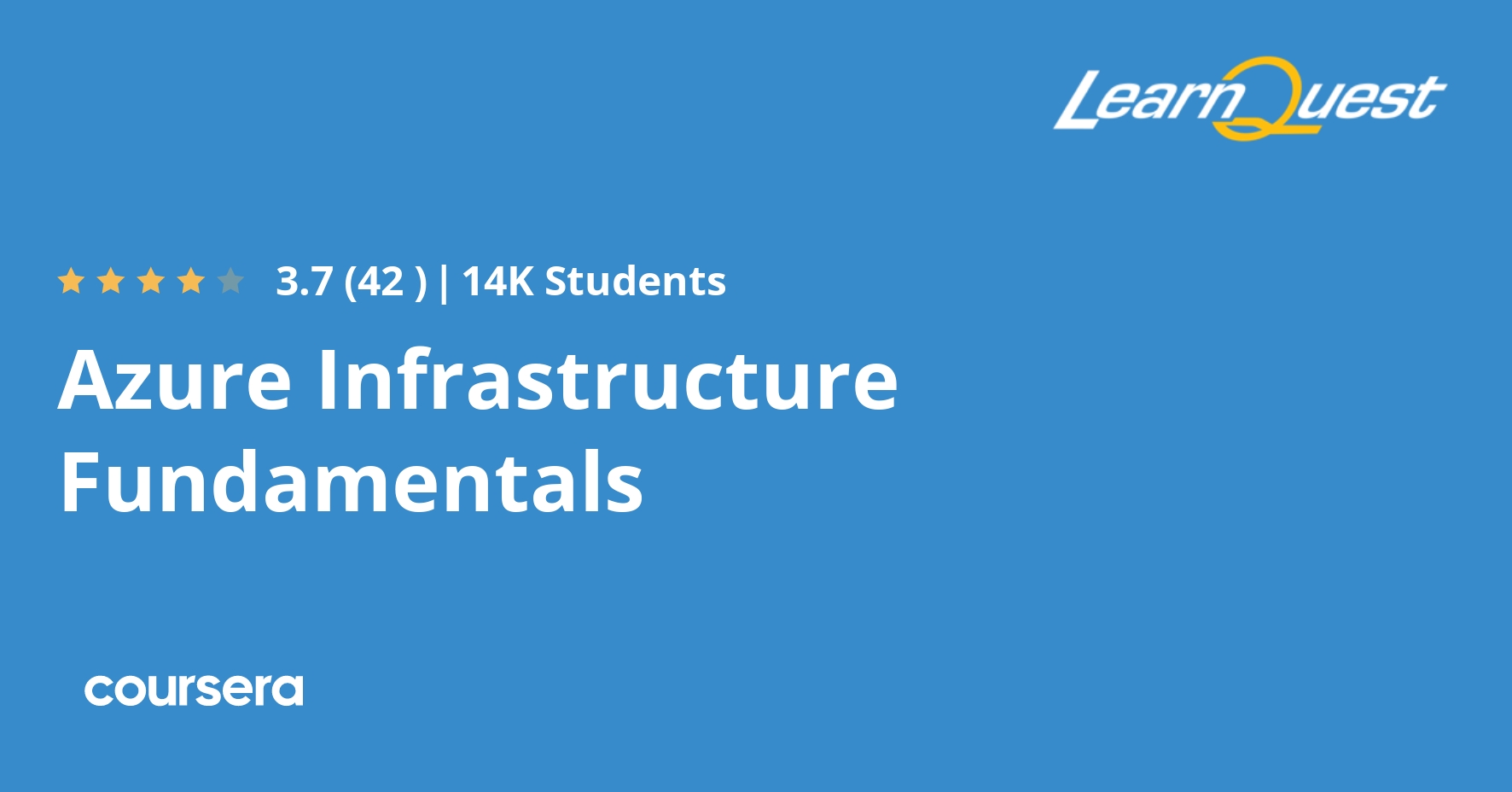Description
Microsoft Azure is a service created by Microsoft to provide cloud computing for creating and managing applications and services using a cloud environment. Azure provides software as a service (SaaS), platform as a service (PaaS) and infrastructure as a service (IaaS). The platform supports many programming languages and frameworks and can be used alone or in a multi-vendor cloud environment.
This course focuses on the Fundamentals of Azure Infrastructure including infrastructure as a service. We’ll begin with understanding the subscription, configuring security and acquiring storage. Then you’ll build virtual machines and VNETS. Azure environments can be highly available and very resilient. Data can be backed up to the cloud for safety. These are the concepts we will discuss in this course.
What you will learn
Course Introduction
This module is an introduction to the course. It will introduce the instructor and the topics that will be covered. Then it will guide the student into creating a new Azure subscription to use in the course.
Module 1: Managing Azure Subscriptions
Our journey begins with learning about the subscription and how to manage it. The subscription is the building block for all that we do in Azure. So, we need to understand what it is and how it is used. We will first take a look at the resources and resource groups. Then we will explores the permissions structure that is used to secure Azure resources. Then we are introduced to the first tool that is the Azure Monitor. We will look at creating alerts and also analyzing data using Log Analytics. Then we look at how we can configure additional diagnostics to help us make more informed decisions in designing the Azure environment.
Module 2: Managing Resource Groups
Now that we have a foundation for Azure we need to delve a little deeper into security. In this module we will be looking at how to use RBAC (Role-Based Access Control). We will be look at working with Azure roles and how to configure access to Azure resources. We will also talk about creating custom Azure roles. Then we discuss using Azure policy to prevent project sprawl and also to protect the Azure environment.
Module 3: Azure AD Identity Management
When working with Azure we are using identities. These are housed in Azure AD and also on-premises Active Directory Domain Services (AD DS). In this module, we will examine Azure AD and contrast it with AD DS. Also, we will look at the tools that are involved in creating a Hybrid Azure AD environment. The discussion would not be complete without talking about how to secure the environment and using MFA. Plus, we need to understand the different editions of Azure AD, so we will be exploring this topic also.
Module 4: Storage
Storage is very important in Azure. Without storage then Azure would not exist. There are several different aspects of storage that we need to understand. We look at each of these different concepts. Things like the storage account, replication , lift/shift and so much more.






